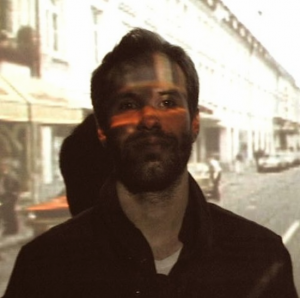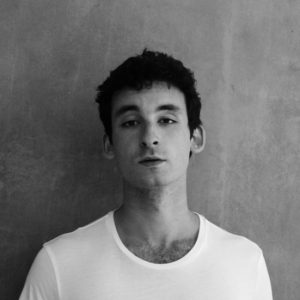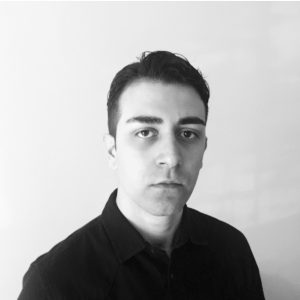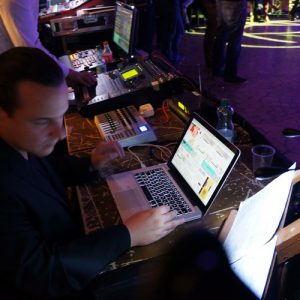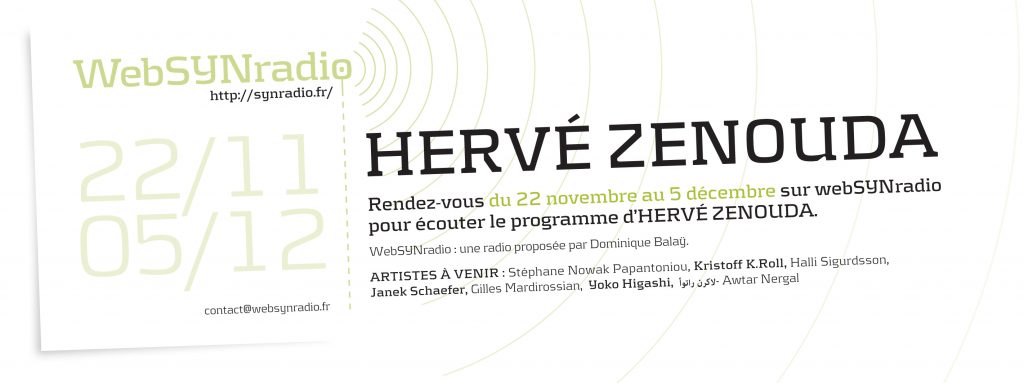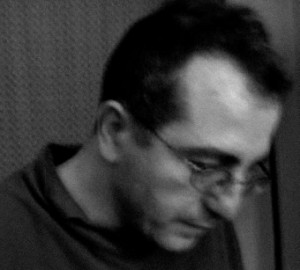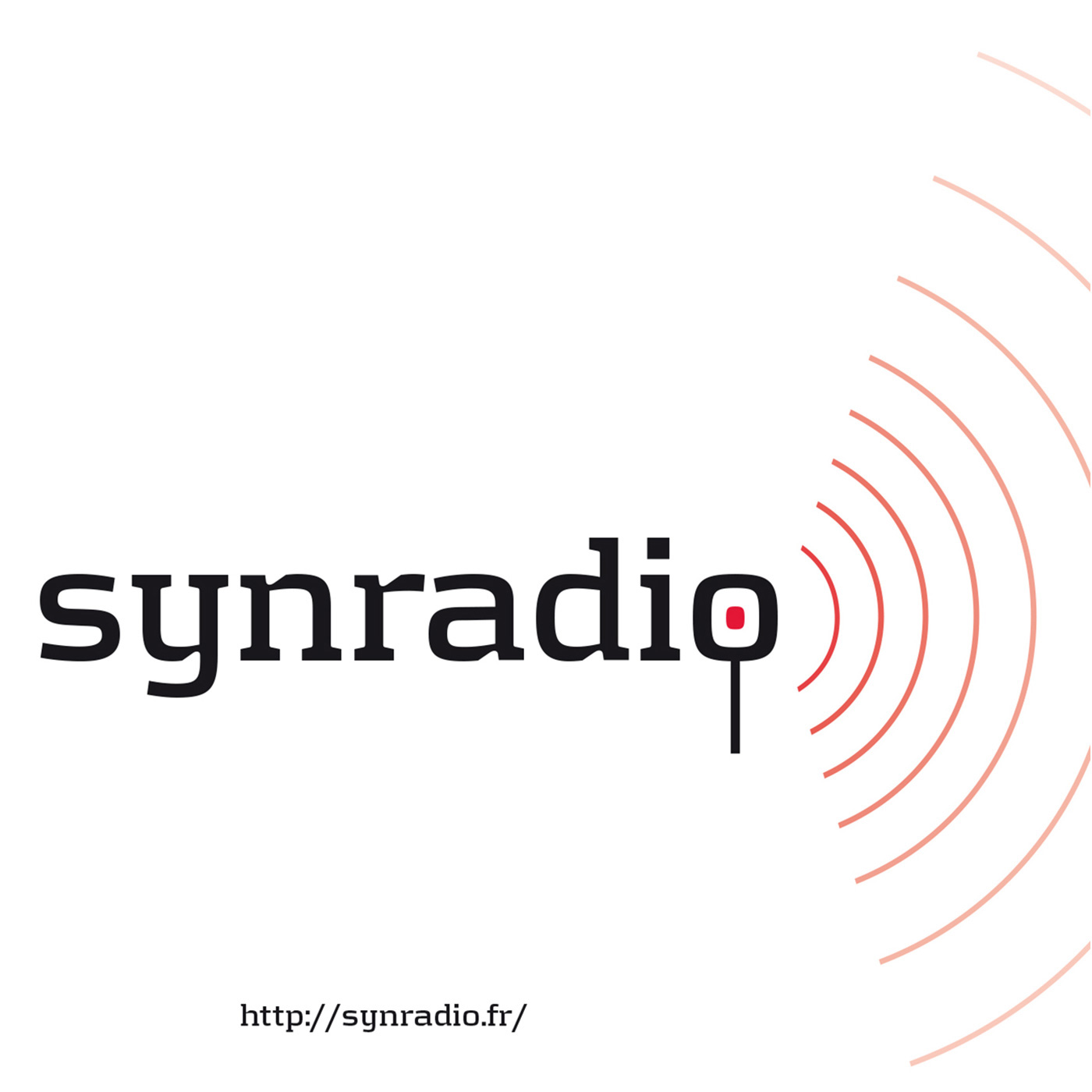Podcast: Play in new window | Embed
Subscribe: Apple Podcasts | Spotify | Android | Podcast Index | Email | Deezer | RSS | More
HERVÉ ZÉNOUDA
Un aperçu de la musique contemporaine émergente / A survey of the emerging contempory music
Si vous avez deux heures sept minutes et deux secondes à perdre ou à gagner…
Comme certains, il m’arrive souvent de passer du temps sur le Web pour découvrir de nouveaux champs musicaux… En voici ici le résultat, parmi des centaines d’autres possibles, de mes dérives numériques : onze morceaux de jeunes compositeurs s’inscrivant dans le cadre de la musique contemporaine internationale particulièrement florissante aujourd’hui + un morceau coda : une magnifique version de l’hymne Anglais « Jerusalem » (Paroles : William Blake, musique Sir Charles Hubert Hastings Parry), emplie de beauté et d’émotions avec cette manière, si délicieusement fausse, de chanter de Billy Bragg.
Inutile de dire, qu’après une telle qualité musicale, il m’était rigoureusement impossible d’y intégrer un morceau de mon cru… ce sera donc pour une prochaine fois…
Hervé Zénouda (Novembre 2018)
-1 Nicolas Jacquot, Farewells, 7’32, 2018
-2 Samir Amarouch, Analogies, 8’52, 2017
-3 William Dougherty, Hyper electric, 11’50, 2017
-4 Uğurcan Öztekin, Naufragii, 6’56, 2017
-5 Idin Samimi Mofakham, Hommage à Abolhasan Saba, 5’54, 2012
-6 Michael Pisaro, A Single Charm Is Doubtful, 13’53, 2006
-7 Onur Dülger, The Potbelly Hill, 9’45, 2017
-8 Murat Çolak, Swan, 29’21, 2017
-9 William Dougherty, A stillness of zero sensation, 15’22, 2015
-11 Yair Klartag, Polychronization, 9’36, 2015
-10 Joo Won Park, PS Quartet, 5’31, 2017
-12 Billy Bragg, Jerusalem, 2’29, 1990
Total : 2h 7’ 2’’
1/ Nicolas Jacquot (France), Farewells (7’32, 2018)
Farewells est une pièce mixte de Requiem composée pour les funérailles d’un membre de ma famille. Les fragments de textes sont de Fernando Pessoa, tous tirés du premier de ses 35 sonnets anglais. Comme souvent chez le poète, ils racontent l’incommunicabilité de l’être à travers l’insuffisance du langage : l’indicibilité, ici la révolte spontanée des êtres face au mystère et à la mort, transite par la contemplation et la révérence. Farewells — les adieux, ultime congé des proches qui s’en remettent, si ce n’est à-dieu, à l’assomption d’une transcendance — est une pièce qui prend part au rituel, celui qui achève de relier la présence à l’existence, la vie à la mort.
Les cantus firmus sont issus de la pièce Fuse (2007) pour 2 voix & électronique, le choral électroacoustique est extrait du IIe mouvement de la bande originale Le Surgissement du Réel (2018). Avec Sara Notarnicola & Sirana Szterynski, voix.
2/ Samir Amarouch (France), Analogies (for 16 musicians) (8’52, 2017)
“Entre bruits naturels et sons artificiels, les instruments acoustiques imitent une nature numérisée. Les différents objets sonores employés présentent des morphologies à la lisière entre artefacts et sonorités organiques. Les erreurs que la machine peut générer lors des processus de numérisations sont exploitées comme des erreurs dans notre manière de percevoir. Cigales ou sons de synthèse, chants d’oiseaux ou scintillements électroniques, souffle ou bruit blanc, timbre ou harmonie ? Analogies propose un voyage entre paysage réel et paysage virtuel, entre état de conscience éveillée et état de conscience altérée.
La pièce se découpe en quatre sections ininterrompues :
– Violent et implacable comme une machine
– Nuit d’été
– Apparitions électroniques
– Coma
Analogies est dédiée à mon père.”
Enregistrement de la création au CNSMDP le 1er décembre 2017, dirigé par Simon Proust, mixé par Jean-Christophe Messonnier
3/ William Dougherty (USA), Hyper electric (for two electric guitars and two double basses) (11’50, 2017)
This work was written specifically for (h)artDrive electric guitar duo and Tristan Kasten-Krause and Evan Runyon and was premiered at National Sawdust in Brooklyn, NY in May 2017.
Hyper electric for (h)artDrive electric guitar duo and two double basses is a work that explores the limitless timbral possibilities of the electric guitar juxtaposed with the overtone rich palette of the double bass. My compositional approach combines an awareness of the pitches of the overtone spectrum with a special emphasis on the subtle variations in amplitude, frequency, and tone color of instrumental sounds. These micro-level components give each sound what I believe to be its inner life: a complex, many-layered play of fluctuations. Acoustic phenomena like beating and combination tones color these fluctuations and give listeners an intangible sense of sonority that defies the simple quantifiable scientific parameters that “describe” that sound. It is these elemental fluctuations and the perceived acoustic phenomena that accompany them that I explored hyper electric.
4/ Uğurcan Öztekin (Turkey), Naufragii (6’56, 2017)
“In spite of having a remarkable proximity to spectral music regarding its general character and sonic components, Naufragii, composed for Hezarfen Ensemble, is constructed completely in an unconditioned manner without any spectral analysis and without adhering to a particular system. Basically; Naufragii, composed of the chords and textures deriving from the harmonic series and their variations that occasionally replace each other in progress, presents a monolithic flow with variable auditory structures.”
Instrumentation: flute, bass clarinet, percussion, piano and string quartet.
Date of recording and place: June 22nd 2017, Bilkent Concert Hall, Ankara, Turkey
performed by Hezarfen Ensemble, conducted by Orhun Orhon.
Also last year the piece selected for Donaueschinger Musiktage 2017’s Next Generation Program and performed in Germany.
5/ Idin Samimi Mofakham (Iran), Hommage à Abolhasan Saba (5’54, 2012)
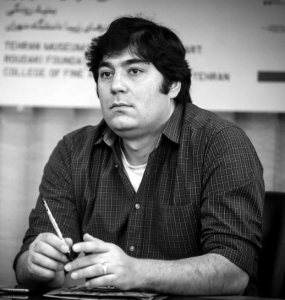
Is based on “Dashti Dastgāh” Who is a sub-class of Shur dastgāh (Dastgāh is a musical modal system in traditional Persian art music). The reason I choose the name Hommage A’ Abolhasan Saba is that I used his systems of modulation of Dastgah, and also uses his tuning system for both Instruments and microtones. The scordatura for Violin and cello is recommended by Maestro Saba because of changing the timbre and also the harmonic overtones of the instruments in the piece.
6/ Michael Pisaro (USA), A Single Charm Is Doubtful (13’53, 2006)

The world of Michael Pisaro’s “Harmony Series” revolves around the process of translation. In this collection of thirty-four pieces the composer translates a wide variety of poems into text scores. The first step is to literally trace each poem, as if one were making a stencil. A five-line poem might become a five-minute piece through this procedure. This kind of action is direct and purposely simple and it will provide a stable space from which each piece will develop. Call this architecture.
In the second step the composer seeks out the internal forces of the text. For example, a text suggesting proliferation is read as a shift from a barely to a clearly audible, multi-faceted sound. As the poem is already in motion, the composer seeks to harness energy rather than block flow. Evocative readings are eschewed in favor of direct transmutation. Asymptotes are drawn to the poem, resulting is an extremely fine mist of possibilities for the performers to tune (and detune) in performance. Call this material.
A piece is set in motion when the mist is sprayed—always lightly—through the stencil (think pathway, pinprick, or filter). This action creates a dynamic situation. As performers our ears focus as a version begins to take shape—it is unmistakable when this happens. A small flutter appears in the fabric of the piece. We notice sounds that cannot be traced back to any of the individual performers. Drawn in by the fluttering, one starts to know (or sense) what sounds are correct to play, even when there are no explicit rules for how they are to be chosen. The piece is thinking. Call this the point of contact. To the performers the distance between score and realization will often seem impossibly large. To travel this distance is the defining experience of this music. Along the way, each realization establishes its own kind of weather system wherein complex relationships are created not only between (and within) the sounds but also the performers. On the other side of the stencil we are in unknown world—sun-distant, alive—immersed in a gently spinning mixture of tone, noise and silence, the radio having been tuned to a previously unheard channel. Call this harmony.
(Program note from the CD on Edition Wandelweiser (0710))
7/ Onur Dülger (Turkey), The Potbelly Hill (9’45, 2017)
The Potbelly Hill, “Göbekli Tepe” in Turkish, is a 12.000 years old temple atop a mountain ridge in southeastern part of Turkey. It is the oldest religious site yet discovered anywhere. This fascinating temple influenced the piece in many layers: 4 temple circles of the site are depicted in 4 sections in the piece according to their imaginary functions during a religious ceremony. In the piece, noises are colored with complex sounds, which are connected through the similar multiphonic contents of cello, bass clarinet and the piano. These are also reinforced with human voice, where all the players sing, hum and whistle in order to give the human-pray aspect of the temple, besides the noisy environment of the ancient world.
neocities.org
8/ Murat Çolak (USA), Swan (29’21, 2017)
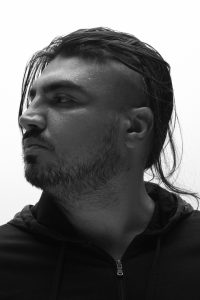
Swan is about going out: going out to the street, to the club, to a ritual, to a party or a funeral. It’s about real places with real people, but less about the realities of these places and more about their vibe. It’s about getting out of home, the studio, the institution, going to places where people connect and do things, sing, dance, laugh, cry, perform, and celebrate.
The work’s aesthetic is a blend of Turkish/Islamic and pop-cultural elements. The opening section, Korridor, is a drone/ambient movement with a big trance synth part. It is ritual music. It’s big, dense, heavy, and it moves slowly, like lava. It blankets you and burns you slowly. Karaoke Mahshar is some sort of a Turkish Trance-Pop hybrid. It is a very melancholic, dark piece of music. The instrumental choir sing an emotional pop/“fantasy music” (a Turkish genre) melody in unison over a flamboyant electronic track. It’s the soundtrack to a club for the wasted, for emotional after-hours karaoke. The final section, Rod Modell, is a dub-techno flavored ambient movement. It is the sound of a huge, postapocalyptic mosque – a mosque sunken in chalky waters. Rod evolves to a big, stretched monophonic melody, coming from a very old vinyl, a song from the old times. It finally cadences to a highly processed “tilâvet” (the Swan) which was recorded during an actual funeral ceremony in the summer of 2016.
Written for Ensemble Dal Niente, Swan was commissioned by NewMusicUSA and premiered at the Frequency Festival in Chicago in February 2017.
9/ William Dougherty (USA): A stillness of zero sensation (for flute, clarinet, violin, cello, piano, percussion) (15’22, 2015)
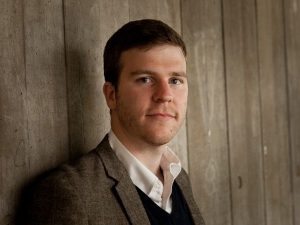
This work was written specifically for the Temple University New Music Ensemble and was premiered in Philadelphia, PA on October 12th, 2015.
Written for the Temple University New Music Ensemble, a stillness of zero sensation is a work that engages with delicate, imperfect, and unstable sounds. The title, taken from a particularly harrowing (and poetic) passage in David Foster Wallace’s Infinite Jest describes the moment immediately before a drug addict, going through withdrawal from cough syrup, has a seizure on a subway train caused by a severe allergic reaction to the scent of a fellow passenger’s deodorant: “He suddenly felt nothing, or rather Nothing, a pre-tornadic stillness of zero sensation, as if he were the very space he occupied.”
10/ Yair Klartag (Israel), Polychronization (9’36, 2015)
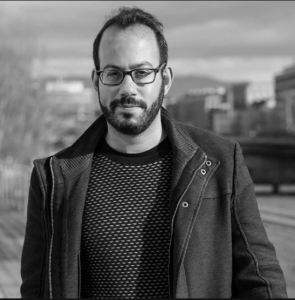
I don’t have a program text for this piece – it’s pretty straight forward. In general, it deals with changing perceptions of time and synchronization. It moves from a continuous stream of melting harmonies, to a discreet divergence in the time flow between the instruments.
11/ Joo Won Park (USA), PS Quartet (5’31, 2017)
Quartet No.1 is a music for Playstation Dualshock controllers and computers. Each performer in the ensemble controls melodic sequences of a Karplus-Strong string synthesizer and interactive visuals on their own laptop screen. The piece is ideally performed with a conductor, who decides the duration and articulations of each section. Using a graphical score created with familiar PlayStation button combinations, the piece takes advantages of each player’s muscle memories on their gaming expertise.
12/ Billy Bragg (England) : Jerusalem (2’29, 1990)
Issu de l’album « The Internationale » (Utility-Liberation, 1990).
Walk upon England’s mountains green?
And was the Holy Lamb of God
On England’s pleasant pastures seen?
And did the Countenance Divine
Shine forth upon our clouded hills?
And was Jerusalem builded here
Amongst these dark satanic mills?
Bring me my bow of burning gold
Bring me my arrows of desire
Bring me my spear: O clouds unfold!
Bring me my Chariot of Fire.
I will not cease from mental fight
Nor shall my sword sleep in my hand
Till we have built Jerusalem
In England’s green and pleasant land.
—
ECOUTER
Première écoute : à partir du jeudi 22 novembre 20h jusqu’au 5 décembre 2018 même horaire.
——
ÉLÉMENTS
Autodidacte, Hervé Zénouda a été tour à tour batteur de punk rock et de new wave, producteur de musiques électroacoustiques, compositeur de musiques néo-expérimentales et enseignant-chercheur à l’université française…

